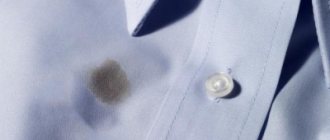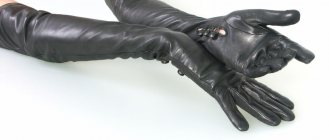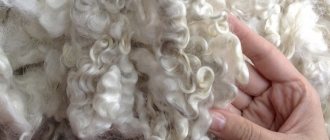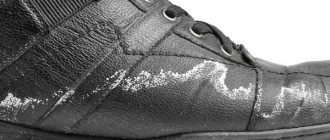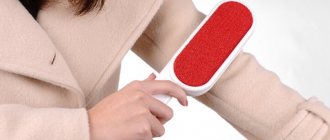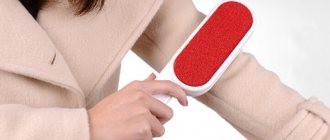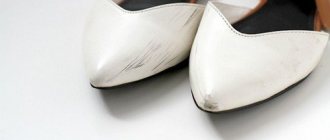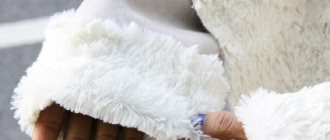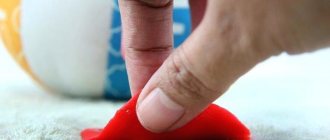Nowadays, fur products are made from various materials, from expensive natural rare animal skins to artificial ones that every woman can afford. But no matter how expensive the material is, no one is immune from the fact that it will turn yellow and lose its presentable appearance. Then the question arises: how to remove yellowness from fur?
To clean your fur, you can go to a dry cleaner or do it at home using effective, proven cleaning methods.
Why does fur turn yellow?
Firstly, it comes from old age. Without nourishment, fur hairs lose their pigment, and precipitation and bright daylight accelerate this process.
- The yellowness is distributed unevenly: first the guard hairs lose color, and a little later the undercoat.
- Not only white furs are susceptible to yellowing, but also arctic fox, silver fox and sable.
Dust, sweat, dirty sediments and cosmetics are gradually absorbed into the structure of the hairs and spoil the appearance of the fur. Therefore, it is important to regularly pay attention to a fur coat, hat and fur collar in order to remove dirt in a timely manner.
Look at the photo of the yellowish fur, how unattractive it looks.
When to turn to professionals
It is recommended to dry clean fur clothes in the following cases:
- detection of old stains on the pile from coffee, fruit, wine and decorative cosmetics;
- large size of the soiled item;
- ineffectiveness of folk remedies and fur care sprays;
- the appearance of stains on fur shoes.
Items are accepted for cleaning only if they are no more than 4 years old.
Fur, especially if it is white, easily absorbs sweat and various contaminants. Therefore, in order to avoid its premature wear, it is recommended to periodically refresh things, while removing all dirt from the pile. Fur cannot be washed in a machine, so when purchasing outerwear, find out what methods exist for cleaning it.
Semolina and flour
This product is widely used for cleaning fur and down scarves. The method is simple, cheap and effective. Cereals remove dust, dirt and grease.
- The fur coat or collar should be laid out on a horizontal surface and semolina should be sprinkled in an even layer.
- To clean the hat, you will need to put it on a three-liter jar wrapped in a towel.
- After this, you need to carefully comb the fur with a soft brush until the rump turns gray.
- If the color is not restored, you need to repeat the procedure with a new portion of semolina.
- Shake the product to remove grains. You can also use a vacuum cleaner at low power.
Instead of semolina, you can use flour, but first heat it in a dry frying pan. Work with flour until it darkens. Then use a new portion.
Precautionary measures
Any fur, and especially rabbit fur, is a delicate material. Careless actions can ruin it forever.
To clean a fur coat or cape and not aggravate its condition, you need to remember a few “taboos”:
- Under no circumstances should fur items be washed;
- It is not recommended to use strong chemicals to remove stains;
- no need to comb the fur with a fine-toothed comb;
- Do not dry fur clothes on a radiator or with a hot hair dryer.
- Washing rabbit fur in a machine is strictly prohibited. To prevent yellowing of a white rabbit fur coat, it should be wrapped in a thick cover of a dark, cool color. It is better to store such a fur coat in a cool place.
To clean rabbit collars and hats, it is better to use cleaning products with a gel consistency. Remembering these simple rules, you can cope with dirt on your own and wear your favorite fur coat for many years.
Starch
How else can you clean white fur from yellowness? Starchy substances perfectly clean and refresh the color of fur. The product is laid out on a horizontal surface, starch is poured on top in an even layer (through a strainer).
A solution of water and detergent is poured into a spray bottle and the fur is sprayed. When the hairs are dry, carefully comb the hairs with a clothes brush.
Another effective remedy is to clean furs with a mixture of starch and refined gasoline. The ingredients are combined to form a paste, applied to the yellowed areas and left to dry. Then simply remove the starch with a clothes brush.
Salt and ammonia
For cleaning, prepare a mixture:
- Alcohol - 1 tsp;
- Salt - 3 tsp;
- Water - 500 g.
The finished mixture is applied with a spray bottle, distributed over the hairs using a clothes brush and left to dry.
Removing greasy stains
If grease splashes onto the fur, prepare one of the following solutions:
- ammonia and white spirit (1:1);
- salt (3 tbsp), ammonia (1 tbsp) and water (0.4 l);
- vinegar and water (1:1).
Then treat the stained areas with a cotton swab soaked in the resulting product. After 30 min. Wipe the pile first with a damp cloth and then with a dry one.
There is another way to remove grease stains. To do this, heat the bran to 50 degrees in a frying pan and rub it into problem areas. After the fat has dissolved, shake off any excess product and comb the fur with a comb.
Wet cleaning with home remedies
Washing solution:
- To treat the product, use detergent for cats/dogs, since it contains substances against the appearance of yellowness.
- Dilute a little shampoo in warm water, then use a soft sponge to apply the solution to problem areas along the hair growth path.
- Instead of pet shampoo, you can use white liquid soap.
And to enhance the whiteness effect, add a couple of tablespoons of hydrogen peroxide to the water.
Blue
The effect of whiteness is obtained by displacing a yellow tint with blue pigment. To make a working solution for processing furs, just a couple of drops of blue in a bowl of water is enough. Make sure that the solution turns out to be a soft blue shade.
On a note! Fur should not be soaked in excess with the solution, as it may become damaged.
You need to lay the product on a horizontal surface and treat the fur with a spray bottle. Then the fur coat is allowed to dry. The final stage is combing with a brush.
Vinegar
How to remove yellowness from fur using vinegar?
- The vinegar solution returns the fur to its original color and shine.
- Take 9% or 6% vinegar, soak a cloth or cotton swab in it, and wipe the yellowed areas.
- To remove the smell of vinegar, the fur coat is hung on the balcony.
Chemicals
You can clean rabbit fur using special products that contain chemical compounds:
- Insaf. Gently cleans the pile and prevents the appearance of new stains on its surface by creating a protective layer. Contains antistatic agent. Insaf is produced in the form of a spray;
- TERRE DE SOMMIERES POWDER. The price of powder with a stain remover effect is high, but it effectively removes greasy stains from the surface of the pile;
- ULTRA FTNISH MILK. The product is produced by an Italian company. It perfectly cleans fur of any type, gives it shine and silkiness. When applied, the villi do not stick together;
- LIVAL LICKER KONZ – removes dirt from fur, returning it to its original color.
After treating fur with chemicals, be sure to ventilate the clothing for 30 minutes.
Biofur, made without the addition of aggressive chemical components, is very popular. Using this aerosol you can clean the pile from dust, food residues, dirt, grease and stains caused by the use of decorative cosmetics.
The Russian company that produces the product claims that its use extends the durability of fur. You can purchase the product in the form of a set or in a separate can.
Peroxide
This is a safe bleaching agent if the proportions are followed. There is no need to increase the amount of peroxide for a better effect; large yellowness should be treated in several approaches.
- To prepare the solution, you need to stir a teaspoon of peroxide and a few drops of ammonia in a tea cup.
- Moisten a cloth with this mixture and treat problem areas.
- Try not to saturate the leather of the fur item with the solution, so as not to spoil it.
- Treat only the surface of the hairs.
Rules for caring for mouton products
There are a number of tricks to extend the life of fur products while maintaining their original luxurious appearance. Most of these secrets concern the proper storage of things:
- The product must not be deformed! Fur coats and sheepskin coats should be stored in the closet on wide wooden hangers so that the fur does not wrinkle. For the same purpose, the hat can be placed in a separate fabric bag or box (the main thing is not to put anything on top!).
- In the summer, it is better to remove the fur item away from the sun's rays. A closed cabinet located in a cool, shaded place is ideal for this purpose. The main thing is to provide air circulation to things so that they do not become saturated with a musty smell.
- Moth is the main enemy of fur products! That is why it is better to “stuff” the closet where fur coats and hats are stored with products against these insects.
With proper care, a product made from natural mouton can last 9-10 seasons (and this is with the average “life” of fur coats and hats being 5 years!). At the same time, a slightly leaky item can always be carefully sewn up (long pile will hide the stitches) or discreetly glued with adhesive tape from the lining side.
Peroxide and starch
Using this product you can clean mink fur from yellowness. Starch is mixed with peroxide to form a liquid slurry and evenly distributed over the white fur.
After drying, the starch should be shaken off and the coat should be combed with a soft brush. If you periodically update the color of white mink in this way, it will always look beautiful.
Cleaning the pile
Starch, semolina and bran are sorbents of natural origin - they absorb dirt and grease without having a chemical effect on clothing. Talc has an inorganic (mineral) nature, but it also adsorbs organic contaminants well and is safe for fur products. You can clean fur at home with all these means.
Large fur items cannot be washed even on the delicate cycle. Washing will cause the item to change in size and the fur will begin to fall off.
When cleaning with sorbents (substances that absorb dirt), cleaning is carried out until the color of the cleaning substance changes. A change in color means that the substance has reacted with dirt and absorbed it.
Instructions on how to clean the pile from various contaminants:
Dilute one part 9% vinegar in two parts water. Moisten a cotton swab and wipe the dirt along the pile. Movements should be light, without rubbing. When using essence, the amount of water should exceed its volume by 4 rubles. carry out work wearing rubber gloves.
Tip: If the dirt is particularly strong, you can use vinegar essence instead, but you need to apply it quickly and carefully so as not to wet the hair or harm it.
Regular grain bran perfectly absorbs grease and removes other types of contaminants. Here's how to clean a rabbit's fur using them - you need to warm them up, sprinkle them on the fur coat and gently but thoroughly knead the latter with your hands. Try not to leave empty spaces. Then simply brush away the bran.
To carry out the procedure using semolina, you will need a vacuum cleaner (a compact car one will do), a basin, semolina or potato starch (about 1.8 kg). If your fur coat is very dirty, peel the fur away from the lining in advance and wash the 2 parts separately.
Pour 10 liters of warm water into a container, add semolina or potato starch. Dip the fur into the resulting mixture, rinse well and shake thoroughly. After completing all the manipulations, go over the surface with a vacuum cleaner with a soft attachment, lay the fur coat on a flat table, laying a white sheet.
After treatment with chemicals, the product will acquire a pungent odor. After the procedure, dry the item outside for 30 minutes.
You can also use starch. During the procedure, the starch changes color and becomes dark and dirty. Therefore, you need to repeat cleaning until the loose mixture becomes completely white. You need to scatter it evenly over the surface of the fur product, and then rub it in.
After this, take a vacuum cleaner with a clean brush attachment and remove all spent talc. Talc is used similarly to starch.
Sprays
The industry produces special aerosols and sprays to restore fur color:
- Fresh-Fur is used to restore the color of light-colored furs;
- Magic Snow is used to eliminate yellow plaque on wool;
- Furasol is a dye for fur; you can paint the product in different shades.
Aerosols are easy to work with. The substance is sprayed evenly over the fur and left to dry. Then the product is carefully combed. If you are going to dye the product a different color, the fur must first be cleaned of contaminants by any available means.
Before working with aerosols, carefully read the instructions so as not to damage the fur product. If you are afraid to dye your fur yourself, it is better to take it to the dry cleaner.
How to clean the lining
Not only the pile of the product needs cleaning, but also its lining. During wear, it is also susceptible to contamination and the appearance of greasy, greasy stains. Often in fur products the top is clean, but stains appear on the lining.
Before cleaning the lining of a fur hat, it is not necessary to remove it from the product; it is enough to carry out the treatment carefully so that the products do not get on the inside.
To avoid tearing it off your fur coat, you can use the following methods:
1) Sweat stains on the lining of a fur coat can be cleaned by applying a mixture of denatured alcohol and ammonia in equal parts.
Products made from knitted rabbit (hat, jacket, vest) can be washed in an automatic washing machine. For washing, turn on the delicate cycle and turn off the spin cycle. The item is rolled up and placed in a special bag. Water temperature no more than 30 degrees.
2) A soap solution is also suitable for lining fabric, but it must be applied carefully so that moisture does not get on the inside.
3) Amway spray is an ideal product for removing dirt from the lining of a fur coat at home. Simply apply it to the dirt and then remove it with a clean sponge.
Important! If the contamination is severe, you can replace the fabric and repeat the procedure. Once all the dust has been removed, you can begin to get rid of stains and greasy areas.
